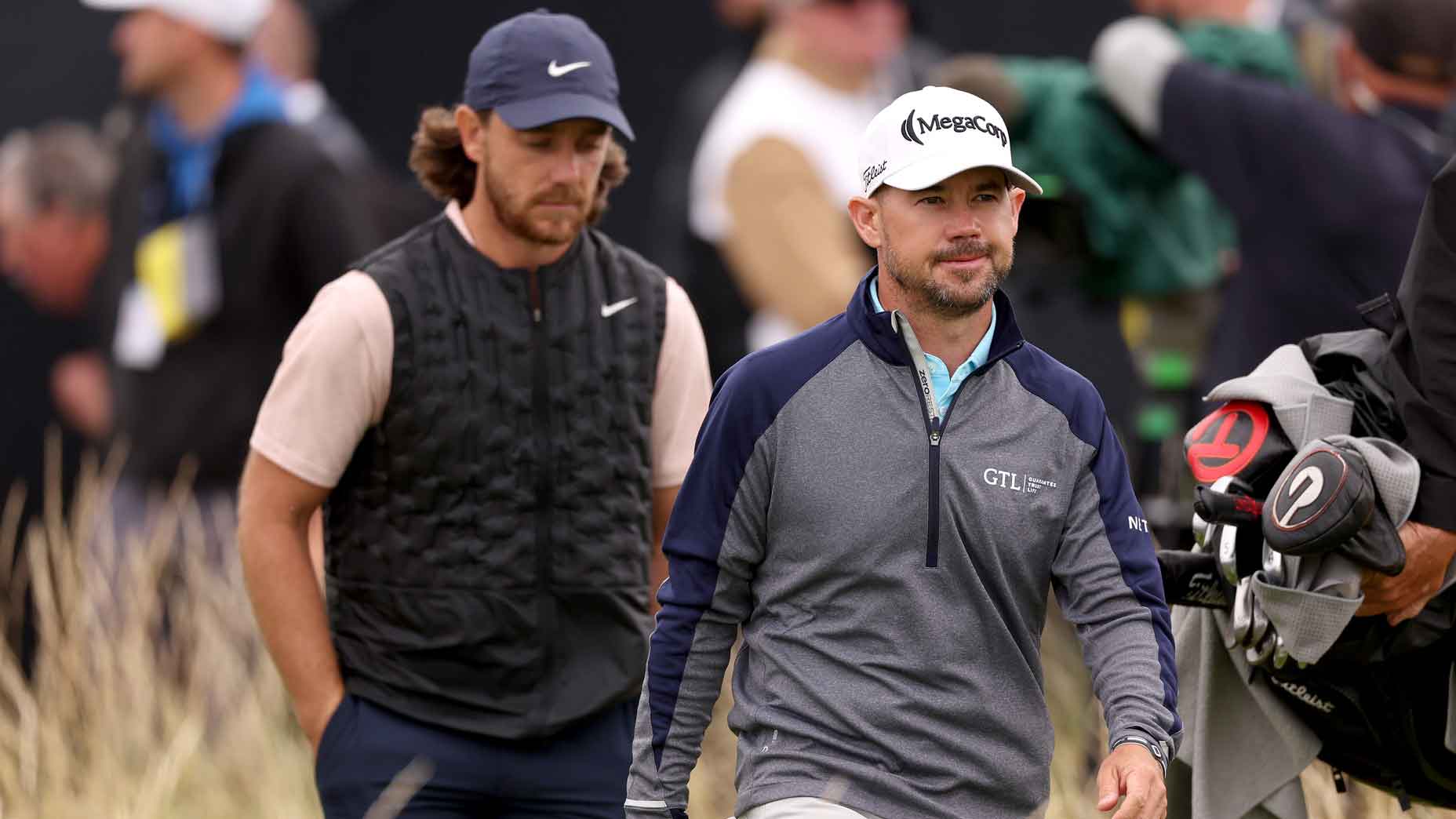HOYLAKE, England — Golf is a sport in which a chap might be celebrated as non-conformist simply for wearing outré shades of khaki pants, and where tournaments on the weekly hamster wheel can blur together like the revolving door “family” partnerships of grifting influencers. There isn’t much left that retains a distinct identity, one unbartered to presenting sponsors nor hostage to discommodious interviews in which CEOs position products from financial instruments to shave foam as bettering humankind. Amid all of this commercialization and homogenization (not to mention politicization), major championships are golf’s safe haven.
Each of the big four owns a particular character, formed over decades and impervious to whatever branding concepts are dreamed up by a marketer with more ambition than awareness.
The Masters is about perfection: in the presentation of the course, in the choreography of the tournament, in the control of the broadcast, in the nomenclature that gives the week its own language. The U.S. Open is the veneration of challenge, or more accurately, difficulty — the desire to exert a vice grip on the world’s best golfers until all but one cry out in surrender. The PGA Championship represents the most compelling case against the Players Championship being a major because the players already have one. This is it, a tournament that prides itself on a set-up that doesn’t upset competitors, even at the cost of sometimes struggling to distinguish itself from other stops on the schedule.
And the Open? It’s defined by a multitude of elements that combine to make it the greatest championship in the game. Why?
Because of the history, for starters. The first shot was struck in the Open three weeks before Abraham Lincoln was elected president and every single great in the annals of the sport has contributed their share since.
Because its the original DNA of a game that morphed into a global sport, essentially unchanged as the unspeakable in pursuit of the inedible over wild contouring land set hard by the sea.
Because the Open doesn’t try to protect players from the capriciousness at the heart of links golf, at least it didn’t until the R&A softened bunkers at Royal Liverpool. Good shots aren’t guaranteed good results and poor shots are often saved by a fortuitous carom off a contour. Vagaries are a virtue, not something to be mitigated.
Because it not only tests execution — which every man in the field has mastered — but also imagination, an asset lacking in many. Forget the video game golf familiar to the professional tours, where balls drop and stop with the precision of drone strikes. Here, routes to the target are foraged along the ground, negating wind and navigating hazards. Even if range finders were permitted, they’d be useless. Raw numbers are as meaningless at the Open as they are in a Russian election; it’s all about how you process them to an acceptable outcome.
Because it presents in abundance the one requirement to make golf interesting: options. Particularly in encouraging a tremendous variety of shotmaking around the greens. Nothing is uniform, which allows competitors to play to their strengths or around their weaknesses, whether lobbing wedges or bunting fairway metals. It’s a beguiling upgrade over the standardized test so prevalent on professional tours these days.
Because the conversation on Sunday night focuses on what might be consumed from the Claret Jug, not on how much honey is in the prize pot.
Because it’s a necessary reminder that golf is an outdoor sport, where the turf is hard and the rain moreso. The other three majors are held in locations and seasons where rain is frequently accompanied by electricity, sending everyone to shelter. It’s a rare Open that doesn’t see wind barrel in from the sea, bringing nasty squalls and taking the dreams of many. Golfers, like livestock, are expected to work in all weather at this major, and there is no better means of separating contenders from pretenders than golf on a filthy day along the British coast.
Because it stands as an annual reminder to golfers, superintendents and greens committees the world over that courses need not be lush lawns and floral extravaganzas, that brown doesn’t equal decay. The motto of the 151st Open — Forged in Nature— ought to be a guiding principle everywhere.
Because of the delightful incongruity between the reputation of the venue and the reality of the surrounding area, usually charmless seaside villages whose luster, such as it was, faded shortly after the Wright Brothers created an alternative for vacations. St. Andrews is the exception that proves the rule, but every Open mixes the stuffy air of an elite club with the faint whiff of fish and chips on the breeze.
Because of the spectators. British golf fans have been progressively deprived of upper-tier golf since the European circuit set out for warmer pastures and despots’ dollars, but the Open has the permanence of Dover’s white cliffs, at least when pandemic insurance payouts aren’t a preferred option. Crowds never disappoint, the number of spectators in shorts inversely correlated to the horridness of the weather. And they possess a deep appreciation for links golf, applauding shots that finish far from the pin because they understand how good that result actually is.
Because of the characters particular to Opens, past and present. Like the longtime first tee starter Ivor Robson, whose advancing years belied bladder control that was marveled at for four days every July. Like retired R&A chief Peter Dawson, who — jaw squared like a navvy shovel — summoned forth the Champion Golfer of the Year with the authority of a field marshal in Arnie’s Army. Like Maurice Flitcroft, the infamous gadfly who gatecrashed Open qualifying five times despite being banned after his first foray, during which he shot 121 (“Does that mean he’s won it?” his mother asked a reporter). Like the gaggle to be seen peering from the clubhouse, white-haired members with teeth like toppled tombstones and dandruff on their lapels, bursting with pride yet faintly irked at the inconvenience of the world’s finest golfers interrupting their weekly four-ball followed by G&Ts.
These are the inseparable components of the Open, each contributing to a potpourri that encapsulates everything that makes up the greatest championship in golf. It’s a list that has remained largely unchanged for most of the century-and-a-half they’ve been playing this thing. Long may it continue.









